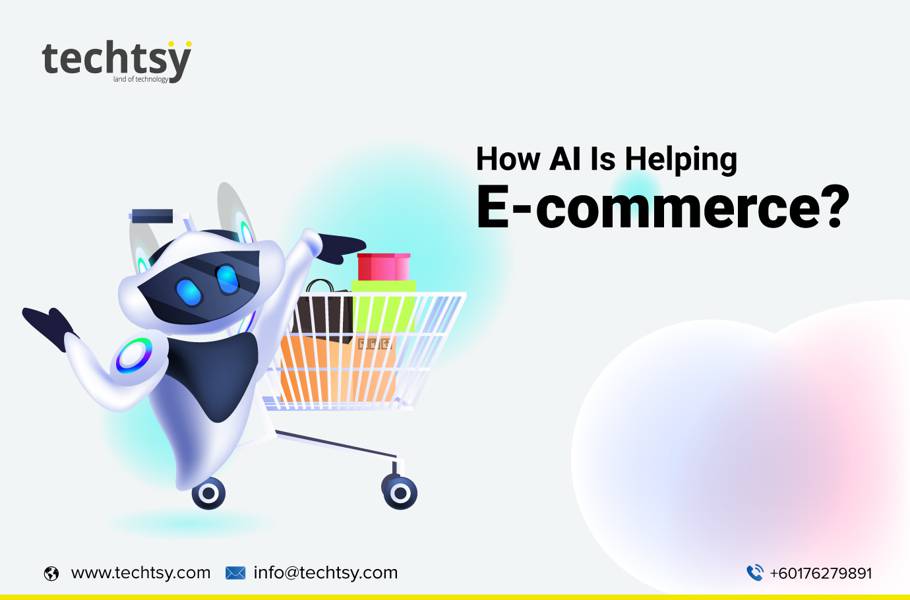
AI is a wide-ranging branch of computer science that aims to understand human intelligence through the construction of computer programs that imitate intelligent behavior. AI technologies are developed and used in different sectors of science, education, engineering, business, etc. Today, one of the industries where AI techniques are used in e-commerce.
E-commerce or (electronic commerce) uses computing and communication technologies to buy and sell goods and services or transmit funds or data.
AI In Different Types of E-Commerce
AI techniques are extensively implemented in e-commerce systems. They are implemented in different e-commerce types such as AI techniques for B2B commerce, AI techniques for B2C e-commerce, and AI techniques for both B2B and B2C e-commerce. These technologies are useful in the development of B2C and B2B e-commerce systems, while B2B e-commerce has around 80% share of the total e-commerce market, B2C covers the rest. But, much of the attention in AI for e-commerce development has focused on B2C transactions.
AI For B2B E-Commerce
Supply Chain Management (SCM) -a network of autonomous or semi-autonomous businesses responsible for procurement, manufacturing, and distribution- is the key point for successful B2B markets and e-commerce as well. Integrating SCM in e-commerce helps to provide real-time data and reduce inventory carrying costs. AI-based SCM problem-solving techniques are agent-based and every agent is responsible for one or more SCM activities, and these techniques approach the SCM problem as a centralized CSP by using a suitable CSP algorithm to solve it. In addition, these techniques can be used in incorporating SCM knowledge and risk benefits.
AI in B2C E-Commerce
AI is mainly used in B2C e-commerce and it helps in providing:
1. Product Selection and Recommendation
It helps develop products recommendation systems by using different types of product selection and recommendation techniques such as the ACF technique (based on “word-of-mouth”), KB technique (based on the knowledge-base of product information), CBR technique (based on past experience), GBR technique (“similarities are goal-based”), and Hybrid technique (a combination of ACF and KB approaches).
2. Negotiation
AI improves the useability of the system by using a CBR-based negotiation process in which buyers and sellers bargain resources such as price, product features, etc.
3. Online Auctions
Online auctions are the other part where AI techniques are being used to help customers to find approximate market prices in order to evaluate an item price accurately, so the user can bid for the optimal price of an item if he predicts the item’s market value.
4. Solving Real-World Scheduling Problems & Improving Server Scalability
In order to access a large number of customers simultaneously, e-commerce servers should be scalable. And AI helps in this by using smart client techniques based on CSP methods to provide solutions for catalog-type e-commerce systems, for example, in a travel domain, finding the flights with restrictions such as fare, schedule, safety, and break-journeys.
5. Generating Automated Responses
AI helps make decisions on bundling and setting the pricing of goods, among other things, providing automated responses to reduce the need for skilled persons to answer customers’ queries. Also, it helps the producer make decisions regarding what goods he can offer, how to offer them, and how the goods should be bundled together.
6. AI In Developing Buyer Agents
AI-based buyer agents help the user to be an informed customer by providing alternate products and informing customers of complex interactions between specified preferences.
AI In Both B2B And B2C E-Commerce
Organizations develop, configure, and use a variety of e-commerce systems for a variety of business purposes. They require a rich data format for exchange in both B2B and B2C e-commerce. Standardization of business models, processes, and knowledge structures for information exchange is critical to achieving the promised ROI. To build a successful e-commerce system, anthologies are used to enable communication between computer systems and persons in an independent way of the individual system, information architectures, and application domain. Despite the fact that there are currently no domain-independent ontologies, ontologies are necessary for collaboration, agent-to-agent communication, knowledge management, and the interoperability of various database systems.
To sum up, one of the primary goals of AI is to create systems that can imitate human behavior. By incorporating AI components, an e-commerce system should appear to its users to be more "natural". By using smart client techniques and AI-based SCM solutions, AI should also improve an e-commerce system's efficiency and performance by producing fast and accurate solutions and the consumption of fewer system resources.

Comments :